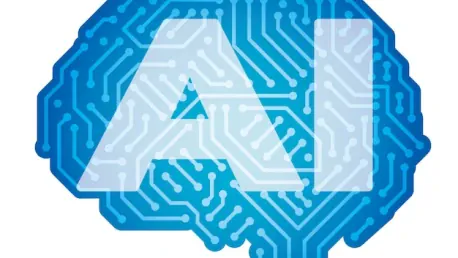The rise of artificial intelligence has ushered in an era of unprecedented technological innovation and transformation. Amidst these advancements, agentic AI emerges as a revolutionary force poised to redefine the AI landscape. Celebrated for its architecture that promises autonomy and unparalleled efficiency, agentic AI sets itself distinctly apart from traditional AI models. However, while its impact is undeniably significant, the implications for major public cloud providers like AWS, Google Cloud, and Microsoft Azure may not align with the anticipated trajectory, presenting a reality that challenges their dominance.
Understanding Agentic AI
Agentic AI represents a significant evolution from its generative counterpart. Its cornerstone is the capacity to function autonomously, possessing the ability to set goals, make decisions, and manage resources independently. This level of autonomy translates into a reduced reliance on the high-capacity centralized processing commonly associated with conventional AI systems. Instead, agentic AI leverages distributed networks, thus minimizing the dependence on specialized hardware.
Such AI systems demonstrate exceptional flexibility by coordinating operations across various environments. They can seamlessly operate on standard hardware, managing resources efficiently without necessitating the high-powered GPU clusters that conventional AI models often rely upon. This inherent versatility questions the premise that agentic AI will significantly amplify public cloud usage, as its deployment does not strictly necessitate high-capacity cloud infrastructures.
Flexibility in Deployment
A notable characteristic of agentic AI is its remarkable flexibility in deployment across multiple environments. Workloads managed by agentic AI can transition effortlessly between on-premises setups, private clouds, and various public cloud services. This seamless migration showcases its exceptional compatibility with diverse infrastructures, ensuring it is not tethered to a single type or provider.
This hybrid approach underscores an advantage for enterprises, allowing them to select the best available option tailored to their unique needs, rather than committing to a singular provider. As a result, hyperscalers may encounter difficulties in capturing a dominant market share as businesses increasingly embrace and prioritize these flexible deployment options. The capacity to integrate seamlessly across platforms empowers organizations to optimize their operations, leveraging the strengths of varied environments.
Efficiency Through Decentralization
Agentic AI’s efficiency largely stems from its decentralized architecture, which stands in stark contrast to the extensive centralized infrastructure typical of traditional AI models. This decentralized design enables agentic AI to perform optimally within distributed setups, ensuring robust and near-continuous operations. Direct integration with storage subsystems further enhances efficiency by minimizing redundant I/O operations, thus streamlining data processing.
Smaller, specialized providers are uniquely positioned to offer more cost-effective solutions compared to major hyperscalers due to the efficient nature of agentic AI. This dynamic challenges the traditional reliance on large-scale cloud platforms, potentially reducing the dependency on hyperscalers. The architecture of agentic AI not only optimizes operational performance but also aligns with the economic interests of businesses seeking sustainable and efficient solutions.
Growing Trend of Distributed Architectures
The current industry trajectory unmistakably favors distributed architectures, aligning seamlessly with the principles and operational framework of agentic AI. The shift from centralized cloud resources to hybrid and decentralized setups is gaining momentum, suggesting an impending transformation of the AI ecosystem into a more diverse landscape. In this evolving scenario, hyperscalers emerge as one of many players rather than singular, dominant forces.
Edge computing, local processing, and hybrid cloud architectures are primed to play central roles in this diversified ecosystem. Such an evolution points to a future where no single hyperscaler holds unchecked dominance over the AI space. The distributive potential of agentic AI aligns naturally with this shift, promoting a balanced approach that leverages a mix of resources for optimized performance and efficiency.
Re-evaluation of Cloud Strategies
As AI workloads continue to surge, enterprises are becoming increasingly cognizant of the rising costs associated with utilizing hyperscaler infrastructure. Early adopters, who once enjoyed substantial cost savings, are now facing significant financial outlays that necessitate a reconsideration of their reliance on public clouds. The accelerating expenses tied to AI advancements are prompting a strategic re-evaluation among businesses.
This paradigm shift is driving companies to seek viable solutions that strike a sustainable balance between cost and performance. Businesses are exploring diverse infrastructural alternatives that can accommodate the growing demands of AI workloads without imposing prohibitive costs. The reevaluation of cloud strategies signifies a pivotal moment in enterprise resource planning, highlighting a critical shift toward economically sustainable and technically flexible solutions.
Emphasizing Control and Flexibility
The decreasing costs of on-premises hardware and the rise of colocation and managed services present businesses with an array of attractive infrastructure alternatives. These options afford enhanced control, flexibility, scalability, and cost-efficiency. Moreover, they alleviate the burden of managing daily data center operations, offering a more streamlined approach to infrastructural management.
This transition marks a crucial challenge for hyperscalers, who must adapt their service models to maintain relevance in a landscape that increasingly prioritizes flexible and decentralized solutions. By aligning their offerings with the evolving market demands, hyperscalers can better cater to the diverse needs of businesses, securing their position in the dynamic AI ecosystem. The shift towards control and flexibility represents a significant transformation in how organizations approach their infrastructural strategies.
Multiprovider Ecosystems
The trend of businesses moving towards multiprovider ecosystems is gaining traction as organizations aim to optimize their specific requirements. Multiprovider setups enable companies to maintain control over their infrastructures while leveraging the strengths of various service providers strategically. This multifaceted approach maximizes operational efficiency and resilience, aligning with the evolving needs of modern enterprises.
Hyperscalers must recognize the shifting dynamics and position themselves as integral components of a broader architectural framework rather than as central platforms. Embracing collaborative and adaptive models will be vital for retaining a competitive edge. By fostering a cooperative approach, hyperscalers can more effectively respond to the multifaceted demands of the market, ensuring their continued relevance in the diverse AI landscape.
The Future Landscape
The rise of artificial intelligence has ushered in an era characterized by unprecedented technological innovation and transformation. In the midst of these advancements, agentic AI has emerged as a game-changing force poised to redefine the AI landscape. With its architecture promising autonomy and unparalleled efficiency, agentic AI distinguishes itself from traditional AI models. However, while its impact is undeniably significant, the implications for major public cloud providers like AWS, Google Cloud, and Microsoft Azure may not align with the expected trajectory. This presents a challenging reality that questions their anticipated continued dominance in the field. As the potential of agentic AI unfolds, it opens new avenues and catalyzes shifts that could reshape the competitive dynamics within the AI industry. Therefore, it’s crucial to closely monitor how these cloud giants adapt and evolve in response to this emerging technology that promises to push boundaries far beyond current limitations.









